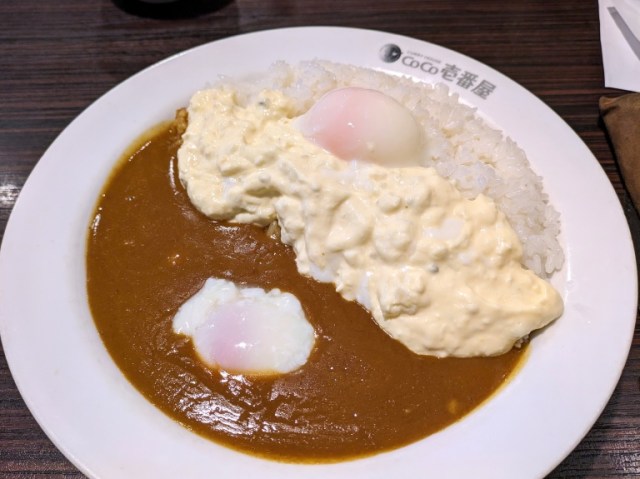
A taste test this strange can only be handled by Mr. Sato.
Japan has a lot of curry rice restaurant chains, but none are quite so beloved as CoCo Ichibanya, also known as CoCo Ichi.
Part of what makes CoCo Ichi so great is that they offer a huge variety of toppings you can add to your plate, like fried chicken, sausages, and tartar sauce.
Yep, tartar sauce. Just like in other countries, in Japan the mixture of mayo, onion, celery, parsley, and egg is most commonly associated with seafood, but it’s recently been added to the topping menu at CoCo Ichi. And just to be clear, tartar sauce isn’t something CoCo Ichi gives you as an extra when you order some sort of seafood for your curry. It’s an individual topping of its own, and is actually available in two different varieties, Creamy Tartar Sauce and Soft-boiled Egg Tartar Sauce.
▼ Creamy Tartar Sauce (クリーミータルタルソー) and Soft-boiled Egg Tartar Sauce (クリーミータルタルソース) on the CoCo Ichi menu touchscreen
To see if curry rice with tartar sauce is just crazy enough to work, we sent our fearless Japanese-language reporter Mr. Sato over to CoCo Ichi to try it out. He started his order with a plate of their standard Pork Curry for 591 yen (US$3.90), then tacked on two orders each of Creamy Tartar Sauce (52 yen per order) and Soft-boiled Egg Tartar Sauce (172 yen per order). Mr. Sato figured that if he was going to test this curry combination, he should let the special guest stars play a big role.
▼ Mr. Sato doesn’t do anything by halves. He does things by doubles/quadruples.
His double order of Creamy Tartar Sauce fit into a single dish…
…but maybe to keep the soft-boiled eggs intact, each Creamy Tartar Sauce order gets its own.
Regardless of whether or not you get the soft-boiled egg, the tartar sauce itself seems to be the same. Taking a test taste, Mr. Sato found it to be a very tasty specimen, with nice rich and tart notes. The sliced bits of hard-boiled egg also had a nice texture and hadn’t melted away.
Mr. Sato wasn’t sure if he was supposed to break up the soft-boiled egg yolks or not, what with tartar sauce on curry being an entirely new experience for him. In the end, he decided to keep the yolks intact.
Like most Japanese curry restaurants, CoCo Ichi serves its curry rice with the roux on one side of the plate, partially overlapping with the rice. In acknowledgment of this aesthetic tradition Mr. Sato poured his tartar sauce in such a way as to create an additional stripe, placing one soft-boiled egg on the tartar sauce and the other in the curry roux.
Starting with a spoonful of rice and tartar sauce, the flavor wasn’t bad at all. Though not a traditional Japanese condiment, mayonnaise is sometimes eaten together with rice (as in tuna mayo onigiri rice balls), and tartar sauce rice didn’t feel all that far off in terms of taste, so Mr. Sato had no complaints here.
Now it was time for the moment of truth, as he mixed tartar sauce and curry roux in the same spoonful.
Surprisingly, this wasn’t bad at all either. The sweetness of the egg and tart flavors of the pickled cucumber were still very noticeable, but now with the savory qualities of the curry backing them up.
However, adding tartar sauce also greatly took the edge off the spicy sensations of the curry. The resulting flavor is rich, but also mild.
That’s not an immediate deal-breaker, however. While curry rice falls into the “spicy food” category, Japanese curry tends to be milder than its counterparts in other countries’ cuisines, so much so that for most Japanese curry fans, it’s the flavor, not the heat, that they’re looking forward to when they order it. If you are in the mood for something with a bit of a kick, though, Mr. Sato recommends upping the spice level on your order, which is another way CoCo Ichi lets you customize your curry.
In the end, for as weird as the concept initially felt, Mr. Sato gives CoCo Ichi’s tartar sauce curry a thumbs up, and we’re guessing it’d be even better if you also added the restaurant’s shrimp or fried squid topping with it.
Photos ©SoraNews24
● Want to hear about SoraNews24’s latest articles as soon as they’re published? Follow us on Facebook and Twitter!


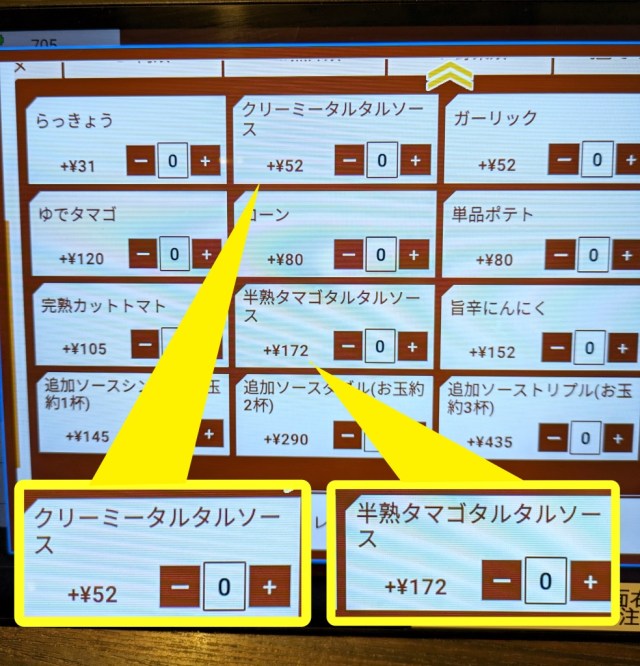
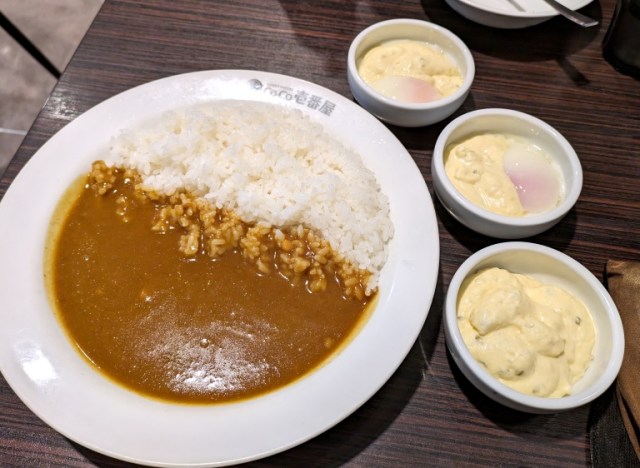
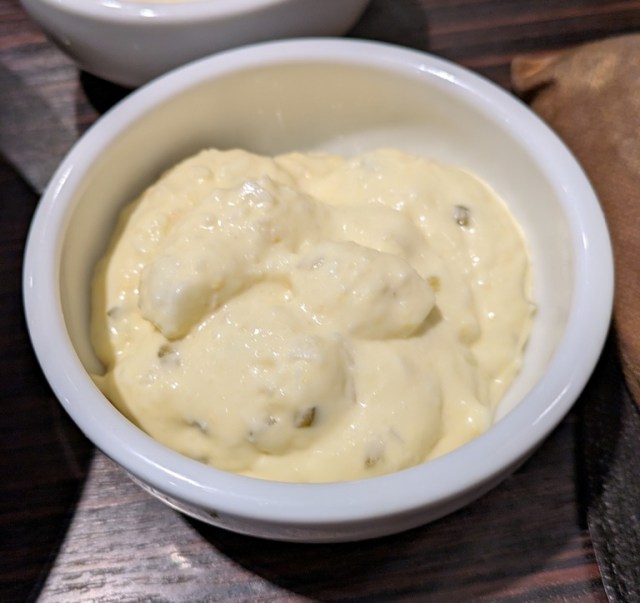
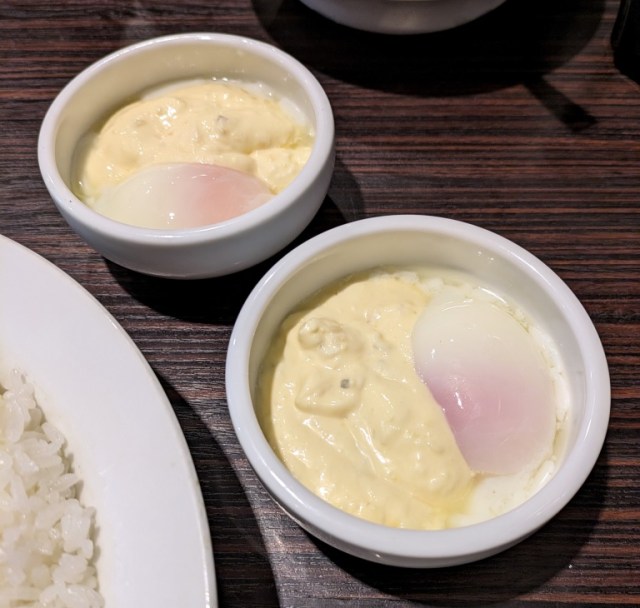
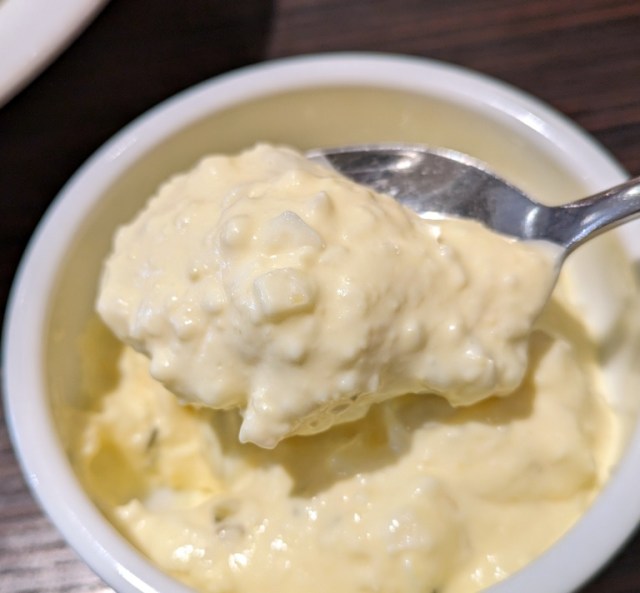

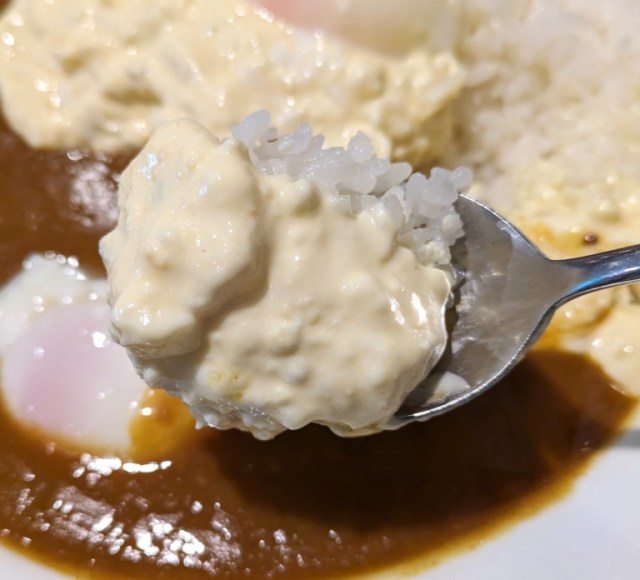
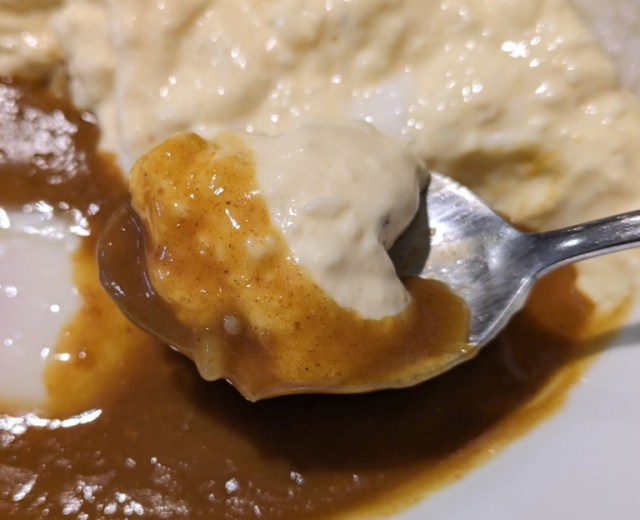
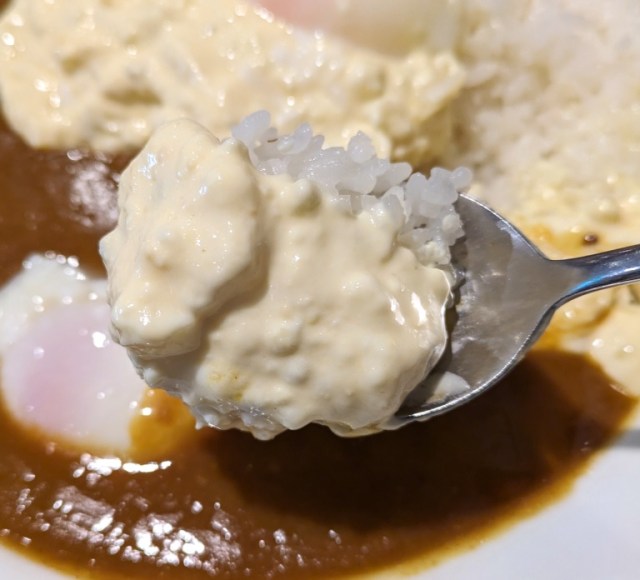
 Mr. Sato goes halal at new CoCo Ichibanya that caters to Muslim diners
Mr. Sato goes halal at new CoCo Ichibanya that caters to Muslim diners Japan’s biggest curry chain now offers a true vegetarian curry
Japan’s biggest curry chain now offers a true vegetarian curry CoCo Ichibanya now selling Taiwanese Lo Bah Spice Curry for a limited time【Taste test】
CoCo Ichibanya now selling Taiwanese Lo Bah Spice Curry for a limited time【Taste test】 Curry for breakfast! Coco Ichibanya, Japan’s favorite curry chain, now has awesome morning sets
Curry for breakfast! Coco Ichibanya, Japan’s favorite curry chain, now has awesome morning sets Japan’s favorite curry rice restaurant teams up with convenience store for Super Spicy Curry Buns
Japan’s favorite curry rice restaurant teams up with convenience store for Super Spicy Curry Buns Demon Slayer: Kimetsu no Yaiba gets new roller coaster attractions and food at Universal Studios Japan
Demon Slayer: Kimetsu no Yaiba gets new roller coaster attractions and food at Universal Studios Japan How to order snacks on a Shinkansen bullet train in Japan
How to order snacks on a Shinkansen bullet train in Japan Nintendo history you can feel – Super NES, N64, and GameCube controllers become capsule toys
Nintendo history you can feel – Super NES, N64, and GameCube controllers become capsule toys New Nintendo Lego kit is a beautiful piece of moving pixel art of Mario and Yoshi【Photos】
New Nintendo Lego kit is a beautiful piece of moving pixel art of Mario and Yoshi【Photos】 McDonald’s adds a new Cheese Bacon Potato Pie to its menu in Japan for a limited time
McDonald’s adds a new Cheese Bacon Potato Pie to its menu in Japan for a limited time Japan’s new difficult-to-drink-from beer glass protects your liver, but it’s a brutal experience
Japan’s new difficult-to-drink-from beer glass protects your liver, but it’s a brutal experience Burger King Japan suddenly adds Dr. Pepper and Dr. Pepper floats to its menu nationwide
Burger King Japan suddenly adds Dr. Pepper and Dr. Pepper floats to its menu nationwide Japan’s foreign population reaches historic milestone following largest-ever single-year surge
Japan’s foreign population reaches historic milestone following largest-ever single-year surge Shinjuku izakaya’s all-you-can-eat-and-drink plan is one of Tokyo’s best secret cheap eats
Shinjuku izakaya’s all-you-can-eat-and-drink plan is one of Tokyo’s best secret cheap eats Creator of Rurouni Kenshin manga/anime avoids jail time in child pornography possession case
Creator of Rurouni Kenshin manga/anime avoids jail time in child pornography possession case Hello, cosmetics! Clinique teams up with Hello Kitty this summer for first-time collaboration
Hello, cosmetics! Clinique teams up with Hello Kitty this summer for first-time collaboration “The most Delicious Cup Noodle in history” – Japan’s French Cup Noodle wins our heart【Taste test】
“The most Delicious Cup Noodle in history” – Japan’s French Cup Noodle wins our heart【Taste test】 Starbucks releases a cute Frappuccino and Unicorn Cake…but not in Japan
Starbucks releases a cute Frappuccino and Unicorn Cake…but not in Japan Kyoto Tower mascot termination reveals dark side behind cute Japanese characters
Kyoto Tower mascot termination reveals dark side behind cute Japanese characters McDonald’s Japan’s Soft Twist Tower: A phantom ice cream only sold at select branches
McDonald’s Japan’s Soft Twist Tower: A phantom ice cream only sold at select branches Yabai Ramen: What makes this Japanese ramen so dangerous?
Yabai Ramen: What makes this Japanese ramen so dangerous? Finally! Nintendo Japan expands Switch 8-bit controller sales to everybody, Online member or not
Finally! Nintendo Japan expands Switch 8-bit controller sales to everybody, Online member or not Japanese government wants to build luxury resorts in all national parks for foreign tourists
Japanese government wants to build luxury resorts in all national parks for foreign tourists To combat declining birth rate, Japan to begin offering “Breeding Visas” to foreigners
To combat declining birth rate, Japan to begin offering “Breeding Visas” to foreigners 10 things you should buy at 7-Eleven in Japan
10 things you should buy at 7-Eleven in Japan Studio Ghibli releases anime heroine cosplay dresses that are super comfy to wear
Studio Ghibli releases anime heroine cosplay dresses that are super comfy to wear Woman charged for driving suitcase without a license in Osaka
Woman charged for driving suitcase without a license in Osaka Studio Ghibli unveils My Neighbour Totoro miniature house model
Studio Ghibli unveils My Neighbour Totoro miniature house model Kyoto experiencing problems with foreign tourists not paying for bus fares, but not on purpose
Kyoto experiencing problems with foreign tourists not paying for bus fares, but not on purpose Fighting mild hunger with a Japanese soda that turns into jelly in the stomach【Taste test】
Fighting mild hunger with a Japanese soda that turns into jelly in the stomach【Taste test】 Studio Ghibli’s Howl’s Moving Castle tapestry unveiled in Japan for first time
Studio Ghibli’s Howl’s Moving Castle tapestry unveiled in Japan for first time McDonald’s new Happy Meals offer up cute and practical Sanrio lifestyle goods
McDonald’s new Happy Meals offer up cute and practical Sanrio lifestyle goods Sales of Japan’s most convenient train ticket/shopping payment cards suspended indefinitely
Sales of Japan’s most convenient train ticket/shopping payment cards suspended indefinitely Sold-out Studio Ghibli desktop humidifiers are back so Totoro can help you through the dry season
Sold-out Studio Ghibli desktop humidifiers are back so Totoro can help you through the dry season Japanese government to make first change to romanization spelling rules since the 1950s
Japanese government to make first change to romanization spelling rules since the 1950s Foreigner’s request for help in Tokyo makes us sad for the state of society
Foreigner’s request for help in Tokyo makes us sad for the state of society Ghibli founders Toshio Suzuki and Hayao Miyazaki contribute to Japanese whisky Totoro label design
Ghibli founders Toshio Suzuki and Hayao Miyazaki contribute to Japanese whisky Totoro label design Doraemon found buried at sea as scene from 1993 anime becomes real life【Photos】
Doraemon found buried at sea as scene from 1993 anime becomes real life【Photos】 Tokyo’s most famous Starbucks is closed
Tokyo’s most famous Starbucks is closed Princesses, fruits, and blacksmiths: Study reveals the 30 most unusual family names in Japan
Princesses, fruits, and blacksmiths: Study reveals the 30 most unusual family names in Japan Japan’s most popular curry chain now has vegan soup curry, and it’s delicious【Taste test】
Japan’s most popular curry chain now has vegan soup curry, and it’s delicious【Taste test】 Lotteria’s Tsukimi Rib Sandwich joins the fight for Japanese tsukimi supremacy【Taste test】
Lotteria’s Tsukimi Rib Sandwich joins the fight for Japanese tsukimi supremacy【Taste test】 CoCo Ichi hamburger steak curry for vegetarians? Taste-testing the meatless option in Taiwan
CoCo Ichi hamburger steak curry for vegetarians? Taste-testing the meatless option in Taiwan Japanese curry chain becomes a hot topic with foreigners on Reddit, but is it any good?
Japanese curry chain becomes a hot topic with foreigners on Reddit, but is it any good? A taste of Japanese curry usually only sold overseas, at Tokyo’s Curry House CoCo Ichibanya World
A taste of Japanese curry usually only sold overseas, at Tokyo’s Curry House CoCo Ichibanya World We eat an intimidating curry with toppings randomly chosen for us by CoCo Ichibanya’s ‘Gacha’ app
We eat an intimidating curry with toppings randomly chosen for us by CoCo Ichibanya’s ‘Gacha’ app Sushi from a vending machine — would you try it? Mr. Sato did
Sushi from a vending machine — would you try it? Mr. Sato did Sushi vinegar for your McDonald’s hamburger? We create the Japan dip sandwich【Taste test】
Sushi vinegar for your McDonald’s hamburger? We create the Japan dip sandwich【Taste test】 We try Lotteria’s new shrimp burger with unique crust, end up seriously impressed【Taste Test】
We try Lotteria’s new shrimp burger with unique crust, end up seriously impressed【Taste Test】 In celebration of Curry Bread Day, we find out which convenience store has the best curry bread【Taste Test】
In celebration of Curry Bread Day, we find out which convenience store has the best curry bread【Taste Test】 No time to cook? No problem! Three easy ways to improve instant curry
No time to cook? No problem! Three easy ways to improve instant curry The weird thing about Domino’s Japan’s Fish and Chips Pizza isn’t the fish or chips【Taste test】
The weird thing about Domino’s Japan’s Fish and Chips Pizza isn’t the fish or chips【Taste test】 We sample blue Drift Ice Curry from the India of the Okhotsk Sea
We sample blue Drift Ice Curry from the India of the Okhotsk Sea McDonald’s releases Come on Baby New York Burgers in Japan…but where’s the N.Y. flavour?
McDonald’s releases Come on Baby New York Burgers in Japan…but where’s the N.Y. flavour? We eat an Italian-inspired lobster curry…at a cheap curry chain!
We eat an Italian-inspired lobster curry…at a cheap curry chain! This triple jumbo shrimp rice bowl hides a shrimpressive surprise
This triple jumbo shrimp rice bowl hides a shrimpressive surprise
Leave a Reply